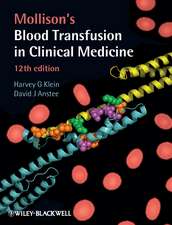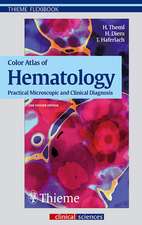Volume Therapy
J. Boldt Editat de Johannes Treib D. J. Cole, F. Cortbus, M.T. Grauer, A Haass, Heinrich Iro, E.T. Riley, K.W. Ruprecht, R. Schell, V. Scherer, W. I. Steudel, G. Stier, F. Waldfahreren Limba Engleză Paperback – 7 ian 2012
Preț: 361.60 lei
Preț vechi: 380.63 lei
-5% Nou
Puncte Express: 542
Preț estimativ în valută:
69.19€ • 72.43$ • 57.59£
69.19€ • 72.43$ • 57.59£
Carte tipărită la comandă
Livrare economică 31 martie-14 aprilie
Preluare comenzi: 021 569.72.76
Specificații
ISBN-13: 9783642640544
ISBN-10: 3642640540
Pagini: 164
Ilustrații: X, 150 p.
Dimensiuni: 155 x 235 x 9 mm
Greutate: 0.24 kg
Ediția:Softcover reprint of the original 1st ed. 2000
Editura: Springer Berlin, Heidelberg
Colecția Springer
Locul publicării:Berlin, Heidelberg, Germany
ISBN-10: 3642640540
Pagini: 164
Ilustrații: X, 150 p.
Dimensiuni: 155 x 235 x 9 mm
Greutate: 0.24 kg
Ediția:Softcover reprint of the original 1st ed. 2000
Editura: Springer Berlin, Heidelberg
Colecția Springer
Locul publicării:Berlin, Heidelberg, Germany
Public țintă
ResearchCuprins
1 Volume Therapy in Neurology.- 2 Hetastarch for the Treatment of Perioperative Hypotension.- 3 Volume Therapy and Ocular Diseases.- 4 Volume Therapy in the Field of Otolaryngology, Head and Neck Surgery.- 5 Volume Therapy in Neurosurgery.- 6 Crystalloids or Colloids for Volume Replacement in Anesthesia and Intensive Care Medicine?.- 7 Efficacy of Plasma Substitutes for a Volume Therapy.- 8 Hydroxyethyl Starch and Reperfusion Injury.
Textul de pe ultima copertă
Volume therapy, or infusion therapy, is used worldwide for the treatment of perfusion disorders, particularly for hypovolemia. In addition to anesthesia, volume therapy is used to improve microcirculation in neurological, neurosurgical, otorhinolaryngological, ophthalmological and angiological treatments. The book shows that treatment effects as well as undesired side effects such as coagulation disorders can be optimized through the choice of the right plasma substitute. This book deals with the question of whether crystalloids or colloids are preferable, which artificial colloids are best suited, and how oxygen-carrying solutions of the future will affect therapy in the years to come.







